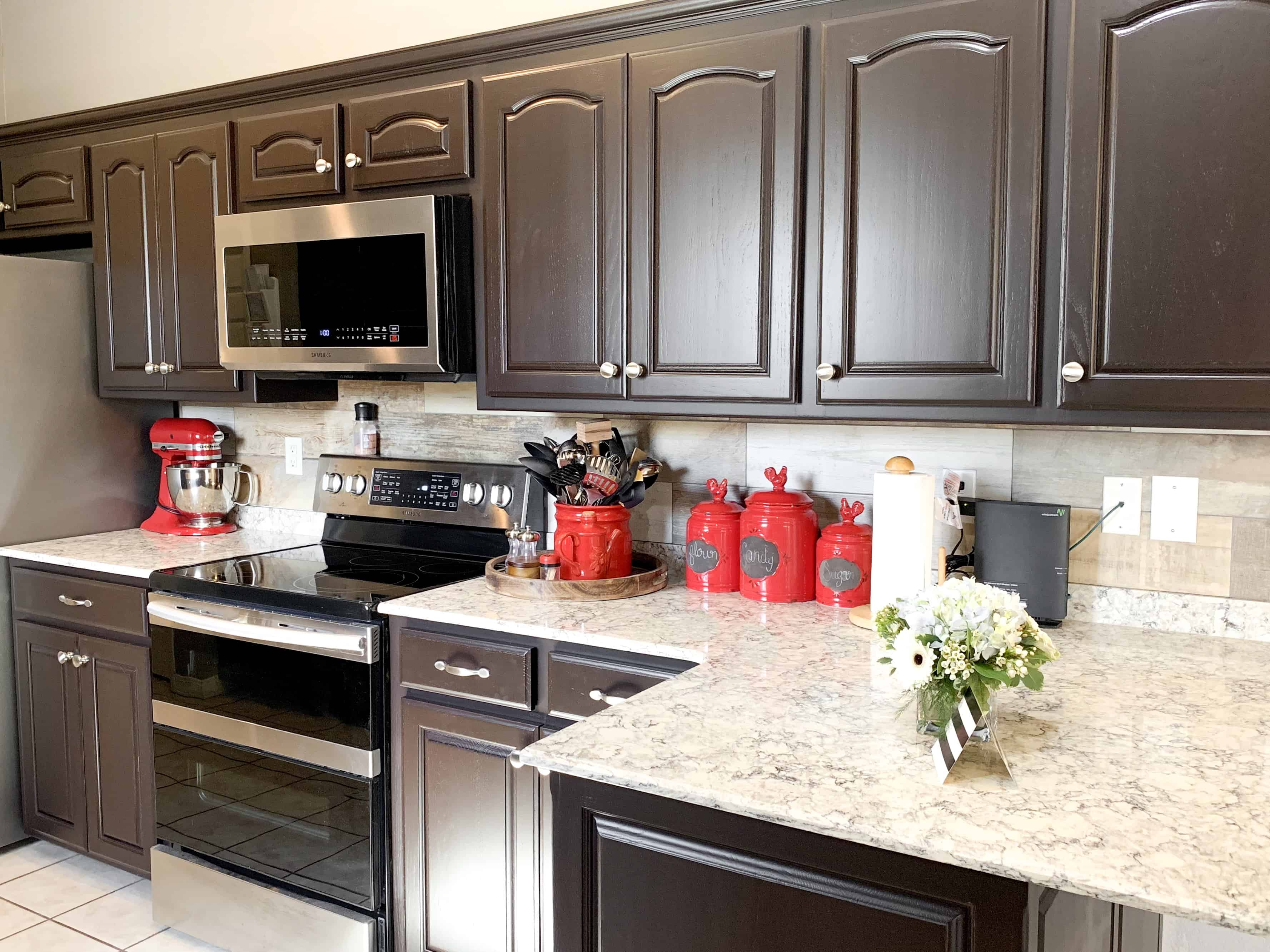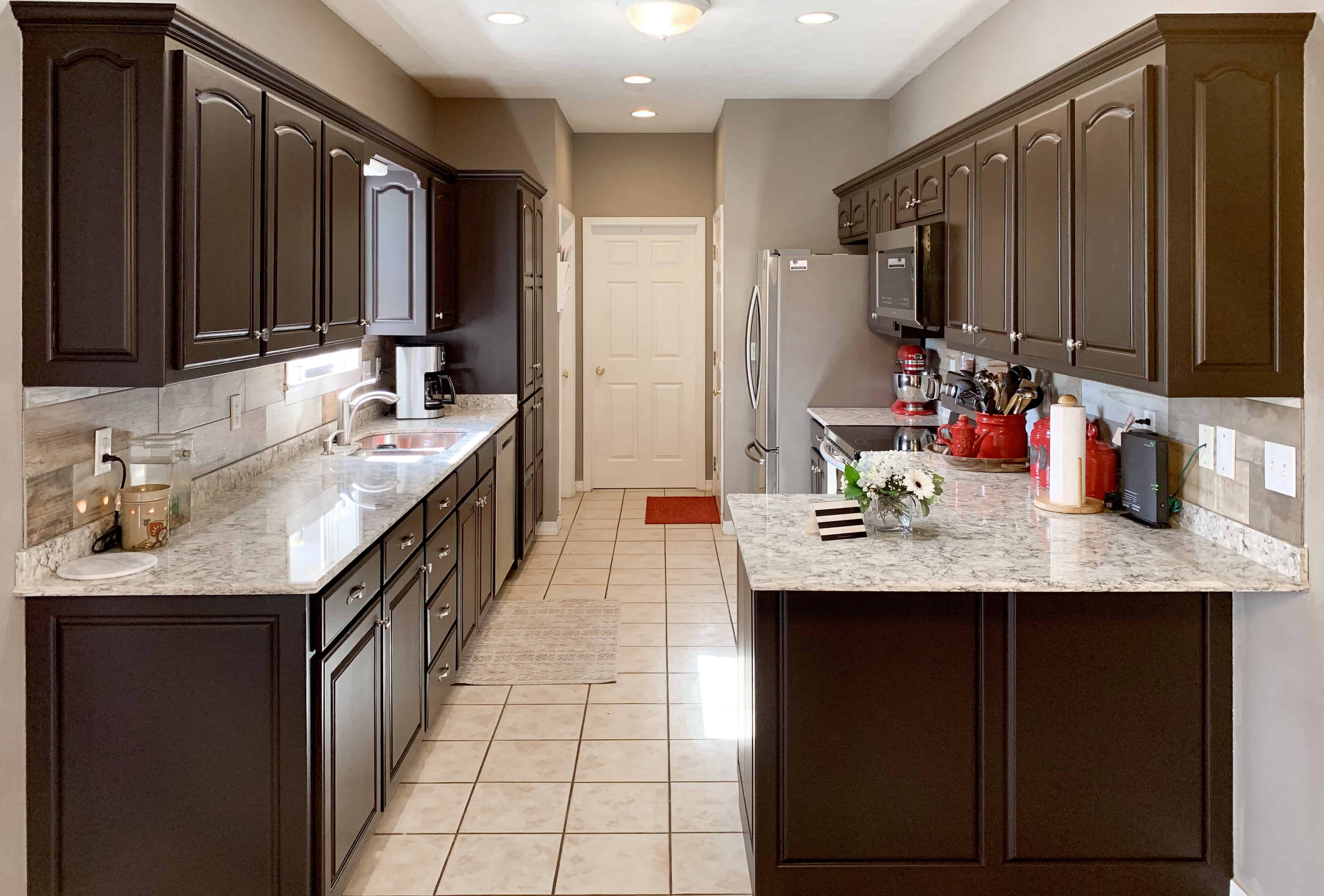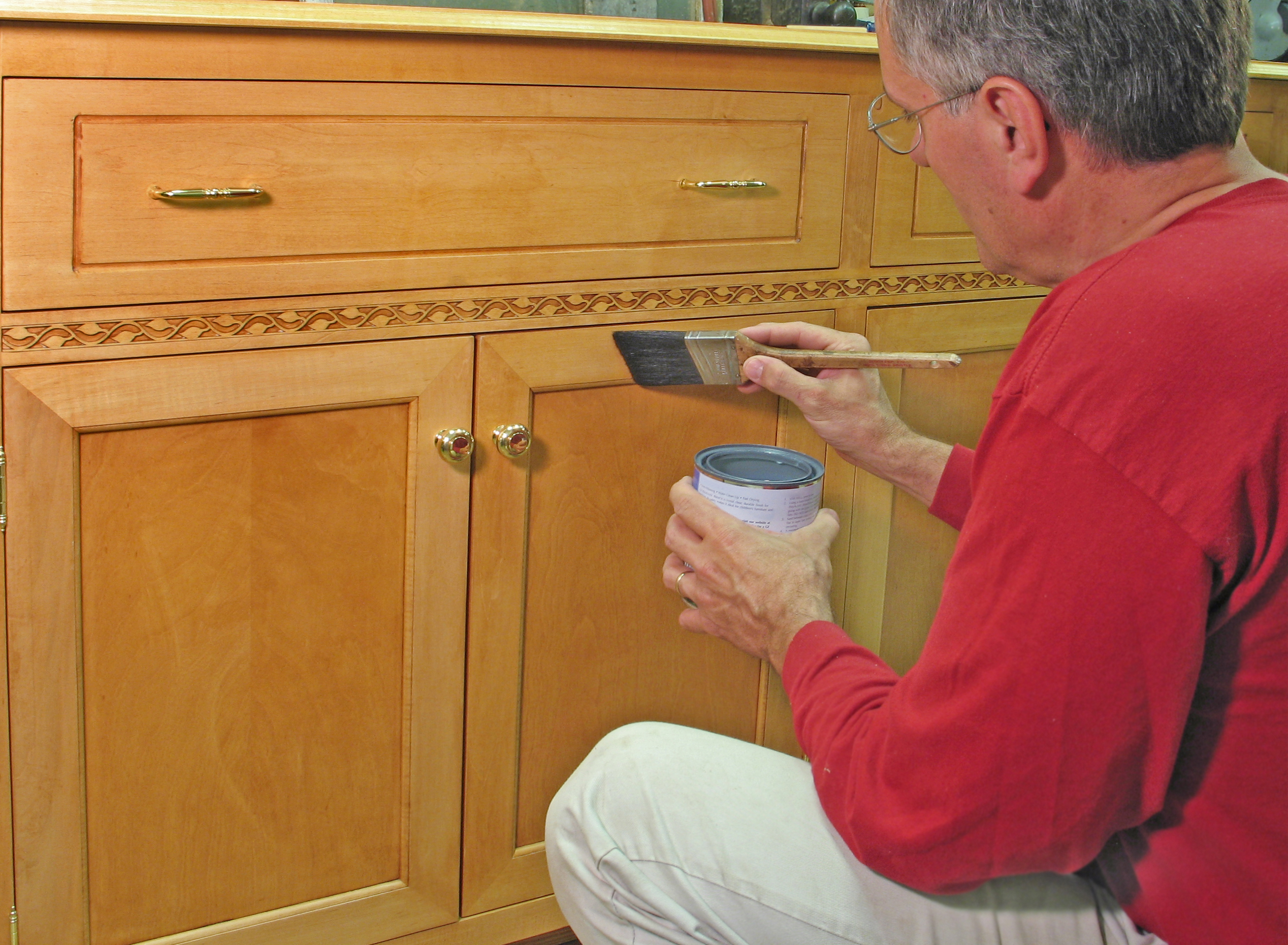Preparing Paper-Covered Cabinets for Painting: How To Paint Paper Covered Cabinets

Proper preparation is paramount for achieving a durable and aesthetically pleasing paint finish on paper-covered cabinets. Neglecting this crucial step can lead to paint adhesion problems, chipping, and an overall unsatisfactory result. This section details the necessary procedures for cleaning, prepping, and repairing the cabinet surfaces before applying any primer or paint.
Surface Cleaning and Preparation
Thorough cleaning removes grease, grime, and other contaminants that can interfere with paint adhesion. Begin by wiping down the cabinet surfaces with a damp cloth and a mild detergent solution. For stubborn stains, a degreasing agent may be necessary. Allow the surfaces to dry completely before proceeding to the next step. Sanding, using fine-grit sandpaper (120-220 grit), helps to create a slightly roughened surface, improving paint adhesion. Focus on smoothing any raised areas or imperfections. Avoid excessive sanding, which could damage the paper.
Primer Selection for Paper Surfaces
Choosing the right primer is critical for successful painting. Different primers offer varying levels of adhesion and protection for various substrates. The table below compares common primer types suitable for paper surfaces.
| Primer Type | Description | Advantages | Disadvantages |
|---|---|---|---|
| Oil-based primer | Provides excellent adhesion and sealing properties, especially on porous surfaces. | Strong adhesion, good for sealing stains. | Strong odor, longer drying time, requires mineral spirits for cleanup. |
| Sheen-based primer | Often used for smooth surfaces, it blocks stains and provides a uniform base for topcoats. | Good for smooth surfaces, quick drying time. | May not provide sufficient adhesion on highly porous surfaces. |
| Acrylic primer | Water-based, low-odor option that offers good adhesion and stain blocking. | Low odor, water cleanup, fast drying. | May require multiple coats for optimal coverage. |
| Adhesion promoter | Specifically designed to improve the bond between paint and difficult substrates like paper. | Excellent adhesion, works well on problematic surfaces. | May require specific application techniques. |
Removing Loose or Peeling Paper
Loose or peeling paper must be removed to ensure proper paint adhesion. Failure to do so will result in a poor paint job. The following steps illustrate the process:
- Assessment: Carefully inspect the paper covering for any loose or peeling areas. Note the extent of the damage to determine the necessary approach.
- Gentle Removal: Use a putty knife or scraper to carefully lift and remove loose paper sections. Work slowly and gently to avoid damaging the underlying substrate. A visual example would show a person carefully using a putty knife to peel away a section of loose paper, taking care not to gouge the cabinet surface. The image would highlight the careful, controlled movements involved.
- Stubborn Areas: For stubborn areas, apply a small amount of warm water to soften the adhesive. Allow it to sit for a few minutes before attempting to remove the paper again. A depiction of this step would illustrate a small amount of water being applied to a section of stubborn paper using a spray bottle, followed by a visual of the same area being gently peeled away after a short waiting period.
- Surface Preparation: Once the loose paper is removed, lightly sand the affected areas to create a smooth surface. This will help to ensure a seamless transition between the new paint and the existing surface. The image would showcase the use of fine-grit sandpaper to smooth the edges of the removed paper and create a uniform surface.
Filling Imperfections and Sanding
After removing loose paper and cleaning the surface, fill any imperfections, such as holes or gaps, with wood filler or spackling paste. Allow the filler to dry completely according to the manufacturer’s instructions. Once dry, sand the filled areas smooth using progressively finer grits of sandpaper, starting with a coarser grit (e.g., 80-grit) and finishing with a finer grit (e.g., 220-grit). This creates a smooth surface ready for priming and painting. A visual example would show the application of wood filler to a hole in the cabinet surface, followed by images of sanding with coarser and then finer grit sandpaper, resulting in a smooth, even surface.
Surface Preparation Checklist
- Cleaned all surfaces thoroughly.
- Removed all loose or peeling paper.
- Filled all imperfections and sanded smooth.
- Surface is completely dry and dust-free.
Choosing Paints and Supplies for Paper-Covered Cabinets

Selecting the appropriate paints and supplies is crucial for achieving a durable and aesthetically pleasing finish when painting paper-covered cabinets. The choice of paint type significantly impacts the final result, while the right tools ensure efficient and professional application. Careful consideration of these factors will contribute to a successful project.
Paint Type Comparison
The selection of paint depends on several factors, including desired durability, ease of application, and budget. Three common types are latex, oil-based, and acrylic paints. Each offers unique advantages and disadvantages.
| Paint Type | Pros | Cons |
|---|---|---|
| Latex | Water-based, low odor, easy cleanup with soap and water, relatively quick drying time, good adhesion on properly prepared surfaces. | Less durable than oil-based paints, may require multiple coats for optimal coverage, susceptible to mildew in high-humidity environments. |
| Oil-Based | Superior durability and water resistance, excellent for high-traffic areas, smoother finish, resists scratches and chipping. | Strong odor, requires mineral spirits for cleanup, longer drying time, may yellow over time, less environmentally friendly. |
| Acrylic | Water-based, low odor, easy cleanup, good adhesion, relatively quick drying time, versatile and available in various finishes. | May not be as durable as oil-based paints, can be more susceptible to scratches than oil-based paints, may require more coats for full opacity depending on the color. |
Essential Tools and Supplies, How to paint paper covered cabinets
Proper tools and supplies are essential for a smooth and efficient painting process. Investing in quality materials will minimize frustration and contribute to a superior outcome.
- Paintbrushes: A variety of sizes are recommended, including angled brushes for cutting in edges and smaller brushes for detail work. Natural bristle brushes are generally preferred for oil-based paints, while synthetic brushes are suitable for latex and acrylic paints.
- Paint Roller and Tray: A high-quality roller with a nap appropriate for the paint type and surface texture (a short-nap roller is generally recommended for smooth surfaces) is essential for efficient coverage. A paint tray facilitates easy rolling and minimizes waste.
- Painter’s Tape: High-quality painter’s tape is crucial for creating clean lines and preventing paint from bleeding onto adjacent surfaces. Apply tape carefully to ensure a tight seal.
- Drop Cloths or Plastic Sheeting: Protect floors and surrounding areas from paint splatters and drips. Adequate coverage is essential to prevent damage to the surrounding environment.
- Putty Knife: Useful for scraping loose paint or filling in minor imperfections before painting.
- Sandpaper: Various grits of sandpaper are used for smoothing surfaces before priming and painting. Start with a coarser grit for initial smoothing and finish with a finer grit for a smoother surface.
- Safety Glasses and Respirator Mask: Protecting eyes and lungs from paint fumes and dust is crucial for safety.
- Primer: A high-quality primer is essential for adhesion and durability. The type of primer should be selected based on the type of paint used.
Primer Selection and Application
Primer serves as a crucial intermediary layer between the paper-covered surface and the topcoat paint. It enhances paint adhesion, improving the durability and longevity of the final finish. Primer also helps to seal the surface, preventing the absorption of paint and promoting a more uniform color. For paper-covered cabinets, a high-quality bonding primer is recommended to ensure proper adhesion to the existing surface. This type of primer is formulated to create a strong bond with the substrate, even on surfaces that are difficult to paint. The primer should be applied evenly and allowed to dry completely before applying the topcoat paint. Multiple coats of primer may be necessary depending on the absorbency of the paper and the desired level of coverage. Failure to properly prime can lead to peeling, chipping, and uneven color in the final finish.
Painting Techniques and Finishing Touches

Successful painting of paper-covered cabinets hinges on employing appropriate techniques to ensure a smooth, even finish that resists chipping and peeling. Proper preparation, as discussed previously, is crucial, but the application method significantly impacts the final result. The following details the optimal approaches for achieving a professional-looking painted surface.
Paint Application Methods
The choice of application method—brush, roller, or a combination—depends on the cabinet’s size and the desired finish. Each method requires a different approach to minimize imperfections.
- Brush Application: Use a high-quality brush with synthetic bristles for smooth, even strokes. For detailed areas, such as trim or corners, a smaller brush is recommended. Apply paint in thin, even coats, working in the direction of the wood grain (if visible). Avoid overloading the brush; excess paint can lead to drips and runs.
- Roller Application: Rollers are efficient for large, flat surfaces. Use a high-quality roller cover with a nap suitable for smooth surfaces. Apply paint in smooth, overlapping strokes, maintaining consistent pressure to avoid variations in paint thickness. A smaller roller may be needed for intricate areas.
- Combined Brush and Roller Application: This approach often provides the best results. Use a roller for large areas and a brush for corners, edges, and detailed trim. This allows for efficient coverage while maintaining precision in delicate areas.
Preventing Paint Defects
Several techniques help minimize common painting problems. Maintaining a wet edge (ensuring each stroke overlaps the previous one while the paint is still wet) is key to preventing lap marks. Avoid applying too much paint at once. Thin coats are more likely to dry evenly, reducing the risk of drips and runs.
| Problem | Solution |
|---|---|
| Drips and Runs | Apply thin coats; avoid overloading brush or roller; allow sufficient drying time between coats. |
| Brush Marks | Use a high-quality brush; apply paint smoothly and evenly; use a roller for large, flat areas. |
| Uneven Coverage | Apply multiple thin coats; sand lightly between coats to create a smooth surface. |
| Lap Marks | Maintain a wet edge; work quickly and efficiently. |
Multi-Coat Application and Finishing
Multiple coats are generally necessary for optimal coverage and durability. Allow each coat to dry completely according to the manufacturer’s instructions before applying the next. This typically ranges from 2 to 4 hours, depending on the paint type, temperature, and humidity. Lightly sanding between coats (using fine-grit sandpaper, such as 220-grit) will create a smooth surface for subsequent coats and improve adhesion. After the final coat has dried completely, a clear sealant or topcoat can be applied for added protection and durability. This final layer enhances the finish’s resistance to scratches and wear, providing a long-lasting, professional look.
